Advances in Automobile Engineering
Open Access
ISSN: 2167-7670
+44 1300 500008
ISSN: 2167-7670
+44 1300 500008
Review Article - (2022)Volume 11, Issue 1
At present time, all consumer goods ranging from air conditioners to thermostats are connected to the cloud-based platform and automobiles are a no exception. Automobile sector is moving slowly and steadily towards autonomous driving vehicles. To achieve this, it is required that the onboard computer mimics the intelligence of a human driver that is the onboard computer should possess vision, contextual intelligence, navigational route and hyper locational awareness. Geomatics concepts provide the necessary real-world locational awareness via GPS and allow efficient planning of the same via GIS techniques. Connected car technologies are moving with a rapid pace and requirement of cloud computing with real-world observations is of prime importance. This is achieved by the concepts of IoT which provides strong base through its flexibility of two-way interactions with cloud and server while planning a network. Environmental entities also play an important part and it is thus required to incorporate the concepts of Intelligent Transportation Systems for successful transportation planning through traffic density estimation and Navigational guidance. Hyper-locational awareness is very essential for any navigation-based problem because in its absence, the connected car concept floats without its ends tied to the real-world scenario where the GPS concepts help fulfilling the wide-open gap. This review portrays necessary information about the concept of connected vehicle technologies and lays a strong foundation for carrying modern-day trending focus on achieving autonomous cars.
Autonomous vehicles; GIS; GPS; Connected vehicle technologies; Intelligent transportation systems; IoT; Artificial intelligence
With the growing pace of global technologies, it’s always required that an Intelligent Transportation System (ITS) must be achieved taking into account the intelligent vehicles’ concept to provide sustainability to the overall system. Wireless networks and sensors with the capability of supporting broadband access with increased mobility have in general gained a lot of attention from both industries in academia in recent years [1-4]. Automotive computation and networking aroused due to stringent demands of the mechanical engine controls utilized through the 1970s were not able to meet the new, necessary emissions regulations.
The concept basically emerged way back when the idea of connecting the vehicle seamlessly over the internet was coined [5] and the server backed up by similar concepts portrayed by Uhlemann E [6]. Their work basically integrated wireless communication system alongside with the computing infrastructure to achieve the set aim. The major challenges that the authors faced were to define a system capable of flexibly handling computing power and inter-vehicle communication alongside with effective navigation system which however prevails at this current world scenario as well [7-9]. At present time, all consumer goods ranging from air conditioners to thermostats are connected to the cloud and automobiles are a no exception. Automobile sector is moving slowly towards autonomous driving vehicles. Vehicle sensing and the corresponding actuation has become decorated with modern cars which incorporates hundreds of sensors along with dozens of computers to facilitate local sensing, interference and action best provided by cloud-based services [10].
The concept of autonomous driving vehicles insists that the rider has to just input the destination in the automobile’s navigation system and the vehicle will guide itself through the routes without human intervention. To achieve this kind of autonomy, it is required that the onboard computer mimics the intelligence of a human driver that is the onboard computer should possess vision, contextual intelligence, navigational route and hyper locational awareness. A schematic basic sketch of a connected vehicle technology system can be seen in Figure 1 incorporating cloud, internet and vehicle itself.
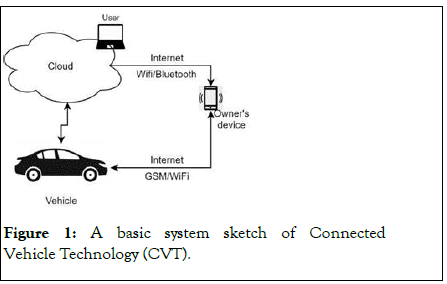
Figure 1: A basic system sketch of Connected Vehicle Technology (CVT).
Connected cars and autonomous vehicles
With emerging trends in automated vehicles, and related areas, the authors in presented a study based on the functionalities of self-driving and autonomous related functions on different vehicles [11]. They reviewed the evolution of smart and intelligent vehicles and also, the supporting technologies keeping in mind the challenges for vehicle system dynamics. They explored numerous themes of driving automation in their study. They portrayed different levels of automation like no or zero automation, driver assistance, partial automation, and full automation. They emphasized on mapping and localization of the vehicle by tracking down the locational information and constructing the digitally enhanced maps. Intelligence in vehicles was being developed through the years at a rapid pace as the expectations and capabilities of self-driving increasing. Till date, the major focus of the literature and study has been mainly on the control aspects (longitudinal) like ACC (adaptive cruise control). There had been a very minimalistic variety of authentic and published studies dealing with the lateral control like lane changing. In a way to modernize the trend, the study in provided a survey of this mentioned area of automation of vehicles [12]. The key topics which were addressed were control systems, modeling techniques, communication and positioning systems, field tests, human factors and surroundings vehicles.
The authors in worked on the concepts of connected cars and navigate them in an efficient manner for long-term communication coverage [13]. It is important in any autonomous vehicle that it constantly undergoes push-pull operations from cloud to be capable enough of millisecond man oeuvres operations. They adopted Deep Reinforcement Learning (DRL) based framework which created highly effective outputs. However, they also inferred that a multi-task control algorithm has to be developed for providing stability into the system.
A very basic architectural design along with the innovative implementations was presented in [14]. The authors stated that autonomous vehicles incorporate numerous disciplines altogether into a single platform. A virtual server named project cocktail was coined which is described in Figure 2 for handling the data and its corresponding communication through a common channel.
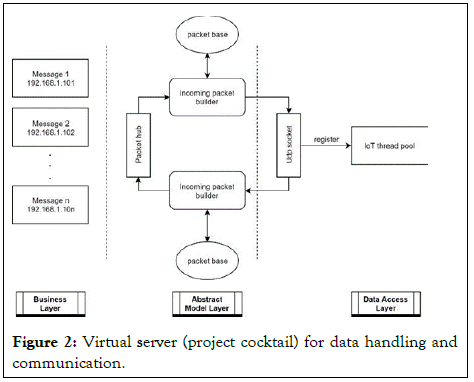
Figure 2: Virtual server (project cocktail) for data handling and communication.
AI-based detection of objects and traffic entities
In order to understand the driving and vehicular environments efficiently, it is of utmost importance that accurate detection and classification of objects is achieved [15,16]. The detection process by sensor-based CVT systems are most significant tasks to perform. Use of Artificial Intelligence in any process yields great efficiency. It is always important to have a foundation of intelligence an autonomous vehicle can sustain. One of the most essential entities of any transportation-based system is the pedestrians [17-19]. When talking with respect to the Indian systems, pedestrians portray an exclusively irregular pattern of movements and actions. This results in fatal accidents and sudden movements of the vehicle. The work in evaluated the classification of pedestrians in a multi-domain and multimodality setup [20].
Humans understand numerous types of information from traffic and transportation environment via “Visual Perception”. However, in contrast to various existing sensor principles video signals present essential information in a significantly indirect manner. Thus, the process of visual sensing requires effective machine vision and image assimilation techniques [21]. A novel scheme of object-detection and corresponding classification using the concepts of decision-level fusion was proposed in which are portrayed in Figure 3 [22]. The technique fused the classification outputs (such as 3D point clouds and image data) using a convolutional neural network (CNN). The proposed technique extracted around 500 proposals when processed on a 1226 x 370 images. The classification performance efficiency was found out to be 77.72% mean average precision.
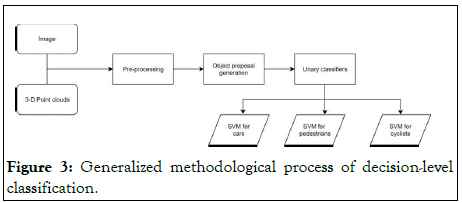
Figure 3: Generalized methodological process of decision-level classification.
Almost all (metropolitan cities) are suffering from dense and high traffic congestion. The researchers in surveyed various Artificial Intelligence (AI) techniques and methods adaptable to the environment of vehicles [23]. Their study aimed at applying advanced AI-based techniques to the vehicles, so that the vehicles can mimic the human-behavior. The study carried out in [24], aimed at presenting a novel strategy for tracking the vehicle and detecting the lanes for estimating man oeuvres. To achieve the proposed results, process of digital image processing was categorized into three functional levels. At the low-level stage, input image was forced for dimensionality reduction (from multiple to single layer), sharpness was greatly improved, and the Region of Interest (ROI) was defined as per the safe distance (minimum distance necessary for safety) from the vehicle ahead. The mid-level processing stage incorporated a feature extractor for detecting lane edges. However, tracking of lanes was discussed in the high-level processing stage. This study was further adapted by some researchers for identification of platoons [25]. Traffic Light Recognition (TLR) is the process of detecting the traffic lights from a captured image comprising of traffic signals in the captured scene. TLR is essential for CVT as self-driving cars may run against a red traffic light and may become an origination for fatal accidents. A novel methodological approach for recognizing a traffic light with high effective dynamic imaging incorporated with deep learning was carried out in [26]. The performance was further enhanced through the incorporation of temporal tracking of vehicular trajectory.
Essentiality of geomatics in CVT environment
The concept of Geomatics plays a very important role in transportation systems as well as those areas where location and planning play an essential role like in connected vehicles technology. GPS helps in locational awareness of the vehicle and congestion of traffic in the transportation network layout making it an intelligent system by tagging it with coordinates. GIS environment creates an atmosphere where visual and analytical planning can be carried out in an efficient and stressfree manner like vehicle routing [27,28]. Vehicle detection is of utmost importance and the most paramount process in any CVT application [29,30]. An approach for achieving autonomous navigation in urban areas utilizing the concepts of GIS-managed information was presented in [31]. The methodological framework was based on the detection of landmarks, their storage using GPS-based locational awareness and then finally utilizing them for routing capabilities.
The authors in their study in [32] worked on the integration of GIS environment into the concepts of autonomous vehicles. Tracking system technology’s feasibility comprised of navigationbased technologies such as (GPS), database management technologies such as (GIS) and communication-based technologies such as General Packet Radio Service (GPRS).
Global Positioning System (GPS) provides hyper-locational awareness to any geographic related task or application. Without the information about location, it becomes difficult to carry out the process. In Tao S, the researchers worked on estimating the urban traffic with Assisted-GPS (A-GPS) mobile phones in realtime scenario [33]. Any intelligent transportation system requires real-time locational data and they collected the same using A-GPS mobile phones. They concluded that A-GPS mobile phones solved the problems of the traffic estimation carried out by the microscopic traffic simulation. The usefulness of GIS for autonomous navigation for CVTs was described in [34]. In many transportation and urban applications, only GPS is not sufficient [35]. This approach was further carried out by the researchers in [36] for creation of a real-time GPS based tracking management system.
Since, vehicle tracking remains one of the most paramount steps in CVT; the researchers in [37] presented a study of vehicle tracking system based on GSM and GPS technologies. The main concern was effective use of hyper- locational awareness and the procedure to estimate them as seen in Figure 4.
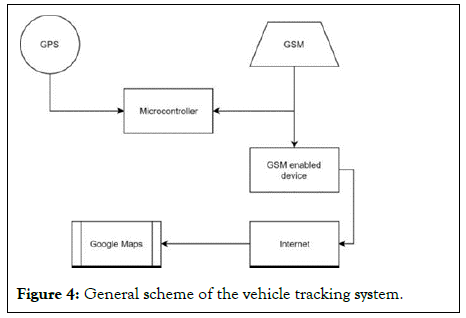
Figure 4: General scheme of the vehicle tracking system.
A very extensive study incorporating GIS tools was presented which was basically a case study of Beijing and Xiong [38]. The study mainly focused on transportation planning and its corresponding multi- criteria analysis using GIS portrayed in Figure 5. The motivation of the study was the pressurized impacts of increasing population and urbanization. Identification of transportation capacity, traffic flow handling and traffic congestions were some of the factors that played an extensive role in any transportation planning study.
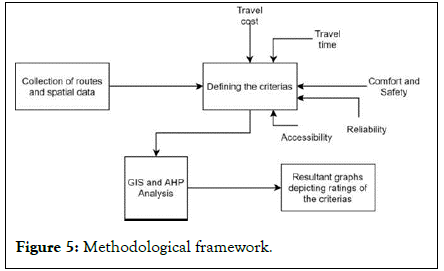
Figure 5: Methodological framework.
IoT and cloud in CVT
The integration of intelligent transportation systems with connected vehicles, IoT and cloud along with its challenges was discussed in [39]. The major challenge discussed was the high mobility of the vehicles affecting the overall performance of the system. They concluded that IoT consists of great potential in the field of CVT and in the coming future; it will serve as the best system domain for any CVT application to sustain effectively. The above discussed work was carry forwarded by the authors in [40] covering the privacy and security issues based on IoT in CVT. The researchers coined the term vehicular grid that basically involves IoV instead of IoT which is abbreviated as Internet of Vehicles. This concept is somewhat similar to the concepts of smart building which IoI (Internet of Infrastructure). When IoT is applied into the CVT domain, privacy and security are the two main issues that have to be handled carefully and at the same time, efficiently. The study stated that IoV would be capable of eradicating attacks like DDoS from hackers which still is a big question mark when talking about CVT. The study portrayed some safety critical applications as well. Safe navigation, collision warning and crash prevention were main application-oriented fields that were spotlighted by the authors.
The automotive industry always emerges as a fast-paced technological trend and stringent requirement of advanced integrated systems is a question mark constantly. CVT is a very significant and popular field of study in both academic as well as automotive industries. In general, through the concepts of wireless networks and practical internet-access, vehicles can have an efficient communication system. The cloud-based services integral to the connected cars and systems always provide robustness into the overall network domain. A good and primitive amount of study was done for exploiting various services that provides vehicle-vehicle related communication process in several countries like Japan, Europe and USA. The study was based on the concepts of IoT in CVT and potential threats arising from the cyber world. They stated that IoT covers all necessary requirements of SMAC (Social, Mobile, Analytics and Cloud). The study portrayed a system that could track and monitor the driver conditions in real-time. This system was based on a microcontroller domain and involved sensors like alcohol sensor, eye blink sensor, gas/smoke sensor, impact sensor, and GPS and GSM module. This was a very interesting concept reviewed by the authors which could actually encompass extensive information regarding the driver as well so that the algorithms can be developed based on such constraints.
CVT: A basis to intelligent transportation systems
Transportation remains a standout aspect of any economy and intelligent transportation is always desirable in the global level [41]. CVT provides a solid basis for transportation to become intelligent as with such increasing population growth, vehicles are also growing exponentially in numbers [42]. Connected and Autonomous vehicles are incorporation of numerous disciplines like electronics, mechanical and even computer vision and a basic overview of the same is of utmost essentiality [43]. To cope up with such humongous stringent demands, vehicle-vehicle and vehicle-infrastructure communication provides accessibility to all types of information that makes the transportation intelligent.
In Seuwou P, the authors presented a novel study assessing the potential impacts of CVT in terms of mobility, safety and environmental perspectives. The study demonstrated a model which measured mobility [44]. They concluded that one of the most prominent future scopes of the overall study was assessment of stochastic travel time perturbation and corresponding impacts in the factors of demand levels and numerous network configurations. Based on the concepts of CVT for trajectory prediction and collision warning algorithm based on vehicle-vehicle communication, the similar studies have been carried out. The study was mainly focused on development of a system in which the host vehicle can send a safety message in the time of urgency. The system was mainly based on Advanced Driver Assistance Systems (ADAS) and its corresponding applications in the fields of CVT as well as ITS. Vehicle trajectory was another important factor that was incorporated in the overall system architecture. Relative position speed and relative positional distance were the two paramount parameters based on which the research outputs were estimated. Based on such parameters, collision detection was calculated. Also, the system was prolific enough for estimation of time to collision.
A study for estimating the state of traffic in real-time through the applications of connected vehicles was presented in [45]. The paper provided a strong approach to incorporate the paradigm of Artificial Intelligence into the domain of CVT and the area of intelligent transportation systems. The accuracy of CVT based AI system for traffic state estimation was found to be 85%. They also stated that with increase in depth of CVT, accuracy yield increases.
A review and conceptual study were presented by the researchers in covering simulation based CVT models on highway sections [46]. To simplify the study analysis, the researchers categorized the CVT into divisions like adaptive cruise control, automated vehicle and autonomous driving vehicles. The study incorporated various streams of transportation. The first was impacts of intelligent vehicles on traffic flow followed by roadway-capacity increase through the autonomous vehicles. Longitudinal and lateral movement of the vehicles was also taken into account for extensive study outputs. Under small headway gaps, intelligent vehicles were capable of enabling highspeed operations which according to the authors was stated as one of solutions for increasing the road capacity. The overall finding was that the intelligent vehicle’s concept was still at preliminary stage involving numerous uncertainties. Even though new concepts and models have been generated, empirical data is required for model calibration and yielding higher performance.
It is quite clear that the autonomous vehicles and connected cars technology yields great deal of study extensiveness and consists of gaps which need to fill so that the driverless cars would arrive sooner in the future. Connected vehicle technology lays a solid foundation to the Intelligent Transportation Systems (ITS) and without its integration, the IT’S remains wide open for falling efficiencies. Hyper-locational awareness is very essential for any navigation-based problem because in its absence, the connected car concept floats without its ends tied to the real-world scenario. This is where Global Positioning Systems (GPS) comes into the picture. Analysis and decision support systems are necessary to assist the concepts of autonomous vehicles and Geographic Information System (GIS) plays an undisputed role in providing the same. Detection of pedestrians, vehicles near-by, traffic lights, traffic density, potholes, speed-breakers, lanes, roads, road markers, drivable area and navigational routes are some of the parameters which are necessary to be computed in real-time for making the autonomous cars a reality in the near-future. The role of Internet of Things (IoT) and Cloud Computing is the most essential as the communication coverage and wireless sensor network is completely dependent on these two areas. Without them, the inter-connectivity and data transmission gets disabled.
With context to Indian Traffic conditions, this gets even worse. Lower data transmission rates, irregular movement of pedestrians, unnecessary placing of speed breakers, interfered driving conditions, non-planar roads, irregular lane change habits of the drivers, festive gatherings, congestions in traffic, poor traffic systems and the list goes on. It is necessary to create a database based on these constraints and the network has to be designed based on them so that a hassle-free system can be sketched. It can thus be concluded that the integration of IoT and Geomatics techniques would serve as a boon in analyzing the autonomous vehicles and their concepts and providing realtime applications to the world of autonomous and driverless cars. With regard to the future scope of the reviewed work, the selection of sensors and the testing site for autonomous vehicles would be very critical. With context to the Indian conditions, many areas still don’t have strong communication and network coverage, hence, the incorporation of IoT modules have to be very efficient and should be utilized in a smart manner. For selfdriving cars to be practical implementation mechanical researches also have to be very profound and robust as the sensing and processing is carried out by the electronic and computing domain but the actuation part is carried out by mechanical domain. The real-time implementation and cloudbased system architecture plays an extensive role in CVT and crisp researches has to be carried out in this trending field of study.
Citation: Sharma N, Garg RD (2022) Connected Vehicle Technology and its Extensibility to Intelligent Transportation Systems: A Review. Adv Automob Eng. 11: 178.
Received: 17-Jan-2022, Manuscript No. aae-22-15486; Editor assigned: 19-Jan-2022, Pre QC No. aae-22-15486 (PQ); Reviewed: 02-Feb-2022, QC No. aae-22-15486; Revised: 05-Feb-2022, Manuscript No. aae-22-15486 (R); Published: 22-Feb-2022 , DOI: 10.35248/2167-7670.1000178
Copyright: © 2022 Sharma N, et al. This is an open-access article distributed under the terms of the Creative Commons Attribution License, which permits unrestricted use, distribution, and reproduction in any medium, provided the original author and source are credited.